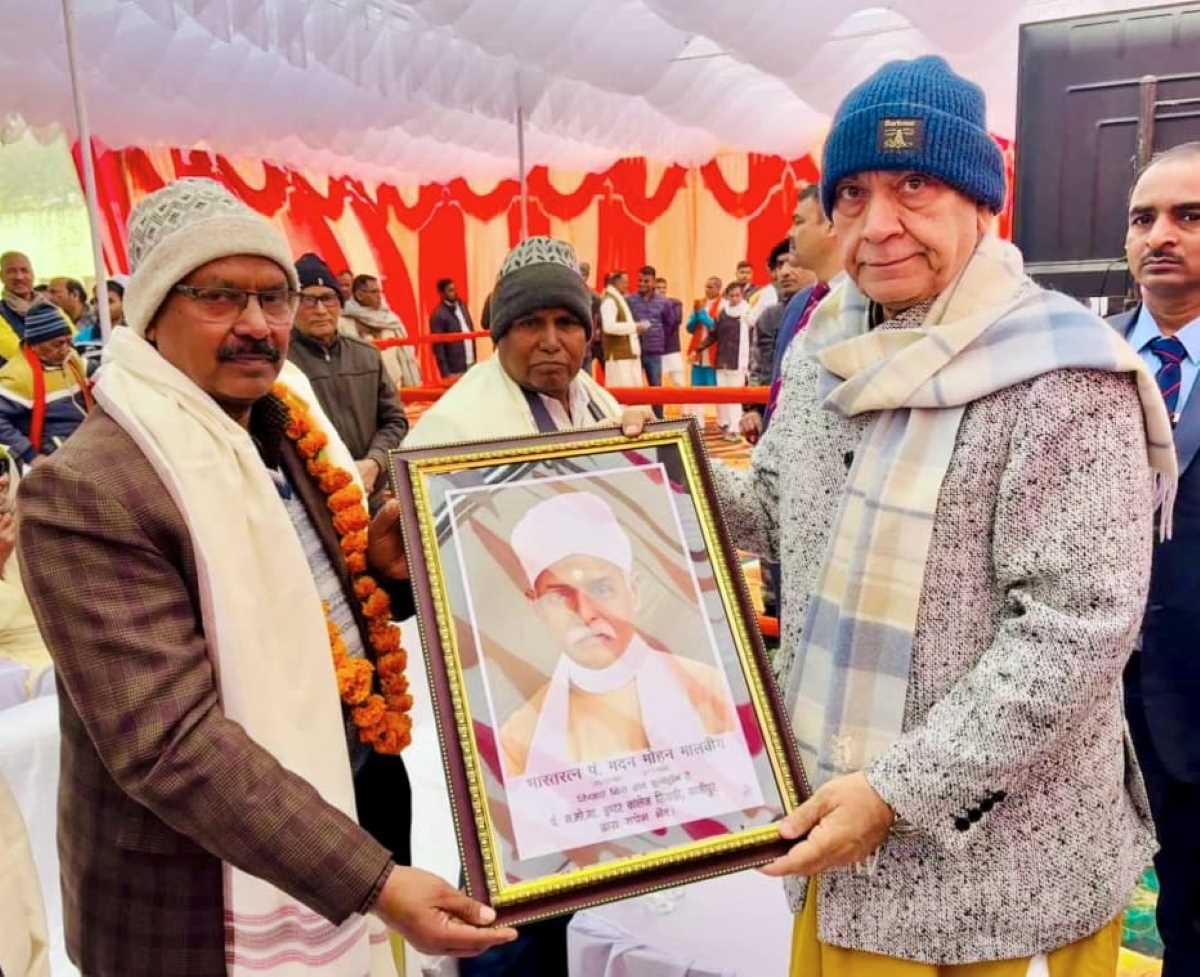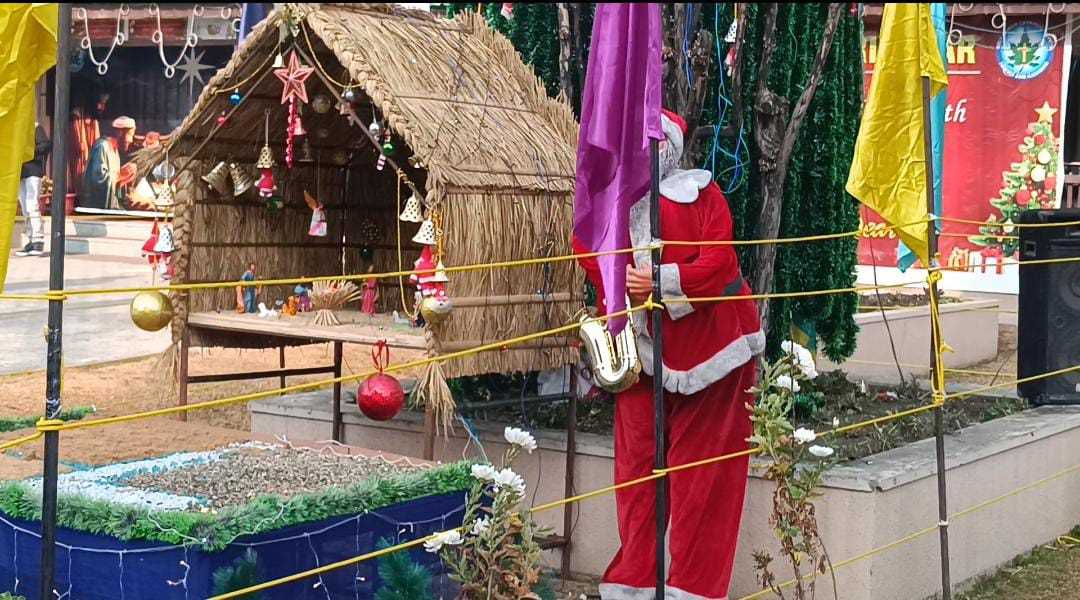
The audacity of these claims is staggering. Pakistan celebrates 27 October as a “Black Day” while ignoring the history of what their forces did in 1947. They sent Kabali raiders into Kashmir, looted homes, killed innocents, and raped women. Our graveyards are full of young Kashmiris because Pakistan brainwashed them, supplied them guns, and used them to spread terror. I often think, if India had not intervened in 1947, those raiders would have killed all Kashmiris and raped our mothers and sisters
After five years of activism guided by facts, logic, principles, and truth, I have read extensively on Kashmir and its politics. I have spoken to elderly residents to understand the realities that unfolded here, and I have analyzed events myself. Over time, I asked a simple question: why is Pakistan, a country that claims religious solidarity with Kashmir while the world has many Muslim nations, so obsessed with this region? Who is behind the chaos that Kashmir has endured for decades? Slowly, the pieces fell into place, and the answers became clear. Every year, Pakistan looks for a day to flood social media with posts like “Black Day for Kashmir.” For them, 27 October is an opportunity to spread propaganda. In this article, I will expose these lies with facts, figures, and logic, and show the world the reality they refuse to acknowledge.
What Actually Happened on 26 October 1947 ?
After the partition of British India in 1947, the princely states were given a choice to join either India or Pakistan. States such as Junagadh, Hyderabad, Bhopal, and Mysore chose to stay with India. Jammu and Kashmir, however, ruled by Maharaja Hari Singh, the last Dogra ruler, initially opted to remain independent under a Standstill Agreement with Pakistan. It is worth noting that even though Kashmir was a Muslim-majority region, it was ruled by a Hindu Maharaja. This reflected the secular and inclusive nature of Kashmiri society, where coexistence was valued over communal divisions. On 22 October 1947, Pakistan violated the Standstill Agreement and sent tribal raiders into Kashmir. They entered through Muzaffarabad and advanced towards Srinagar, looting towns and committing brutal atrocities. In Baramulla, they attacked the campus of St. Joseph’s School and its adjoining hospital, which had been established in the early 1900s. Many civilians and members of the mission staff were killed during the assault, including women who were subjected to unspeakable violence.
In response, Sheikh Mohammad Abdullah mobilised local youth to form a volunteer militia that fought bravely alongside the Maharaja’s forces. That militia later evolved into what is known today as the Jammu and Kashmir Light Infantry. During those days of chaos, Kashmiris raised their own slogan, “Hamlavar Khabardar, Hum Kashmiri Hain Tayyar,” meaning “Attackers beware, we Kashmiris are ready.” It was a declaration that Kashmiris never endorsed Pakistan’s interference and were determined to defend their land themselves. As the invasion intensified, Maharaja Hari Singh realised that his state was under siege. He turned to the Government of India for help. India agreed to provide military support only if Jammu and Kashmir acceded to the Indian Union. On 26 October 1947, the Maharaja signed the Instrument of Accession, the same legal document signed by other princely states. The following day, Indian troops were airlifted to Srinagar, where they successfully pushed back the invaders. This is how Jammu and Kashmir became an inseparable and legitimate part of India, through a lawful and voluntary act of accession backed by its people and government.
Why We Were Fortunate to Remain on India’s Side?
As I have written and researched extensively about the struggles of the people of Pakistan-occupied Jammu and Kashmir, I feel it is important to give my readers some background here. Looking back, the decision to accede to India was not just a political act; it was a lifeline that saved Jammu and Kashmir from the fate that befell the areas forcibly occupied by Pakistan. While the Indian side saw schools, hospitals, roads, and democratic institutions grow, the people across the Line of Control were silenced, exploited, and left without basic rights. In Pakistan-occupied Jammu and Kashmir, there is no true democracy. The so-called legislative assembly functions under Islamabad’s shadow, where even candidates must pledge loyalty to Pakistan to contest elections. Voices that speak for autonomy or basic rights are routinely jailed or silenced. In Gilgit-Baltistan, people have protested for decades demanding constitutional recognition, representation, and control over their own resources, yet little has changed.
What really defines the difference is dignity. On the Indian side, despite our struggles, Kashmiris have a voice, a vote, and the protection of the Constitution. Women study, work, and participate in politics. Roads connect the remotest villages to the rest of the country. Students from Kupwara, Kargil, and Kathua can study in IITs, AIIMS, or universities across India. On the other side, even access to clean water, education, and healthcare remains a distant dream. As I have learned through interviews and personal accounts from the people of PoJK, dissent there is treated as rebellion. Activists like Arif Shahid were killed for demanding freedom from Pakistani occupation. Teachers and journalists who question the system face intimidation. The region’s natural resources are plundered to power Pakistan’s cities while locals live in poverty. The people often say, “We were betrayed in 1947,” and history proves them right. Kashmir’s story could have been the same, a land without freedom, ruled by proxy, its people voiceless. But it was not. Because on 26 October 1947, our Maharaja chose the path that led us to India, to democracy, and to the idea of a shared future where every citizen, regardless of religion, could dream freely.
The Drama of Black Day by Pakistan
Every year, as 27 October approaches, Pakistan gears up to flood social media with slogans like “Black Day for Kashmir.” As I have observed over the years, this is less about Kashmiris and more about politics , a carefully staged campaign to project victimhood, distort facts, and keep the narrative alive internationally. During these days, I have seen almost every Pakistani official handle, from journalists and so-called activists to cabinet ministers and even embassy accounts, posting about 27 October 2025. They organise seminars, programs, and online campaigns. Some of these posts even come from Pakistani embassies in Sydney, Belgium, and the UK. Embassies are supposed to be diplomatic missions, yet they are busy pushing this propaganda. As a common Kashmiri, I would prefer dying rather than visiting Pakistan for even a tourist trip.
The audacity of these claims is staggering. Pakistan celebrates 27 October as a “Black Day” while ignoring the history of what their forces did in 1947. They sent Kabali raiders into Kashmir, looted homes, killed innocents, and raped women. Our graveyards are full of young Kashmiris because Pakistan brainwashed them, supplied them guns, and used them to spread terror. I often think, if India had not intervened in 1947, those raiders would have killed all Kashmiris and raped our mothers and sisters. What is striking is how predictable this theatre has become. State media, politicians, and “activists” synchronise their posts and events to create the illusion of widespread Kashmiri support for Pakistan. The truth is different. Ordinary Kashmiris never wanted Pakistan to interfere in our affairs. Our slogans in 1947 — “Hamlavar Khabardar, Hum Kashmiri Hain Tayyar” , make that clear. This annual performance is a propaganda exercise, not a reflection of Kashmiri reality. Pakistan’s “Black Day” claims are hollow, ignoring both history and the lived experiences of the people under its occupation in PoJK and Gilgit-Baltistan. The facts, voices, and memories of ordinary Kashmiris completely bust this fake narrative.
Conclusion
Kashmiris have never welcomed Pakistan and have always resisted its interference. In 1947, we did not simply choose India. We chose education, growth, development, empowerment, dignity, harmony, and peace and values that stand in stark contrast to what the people of Pakistan-occupied Jammu and Kashmir face even today.Kashmiris no longer accept Pakistan’s fake and staged dramas. The sentiment was clear after the Pahalgam tragedy when ordinary Kashmiris took to the streets, raising slogans like “Pakistan Murdabad,” rejecting interference and propaganda outright. Yes, we observe 27 October as Black Day, but it is not a day for self-pity or theatrics. It is a day to remember and stand in solidarity with the people of PoJK who continue to be oppressed, silenced, and denied their basic rights. Their struggle is real, and it is for them that this day holds true meaning.
Email:--------------------soulofkashmir1@gmail.com



The audacity of these claims is staggering. Pakistan celebrates 27 October as a “Black Day” while ignoring the history of what their forces did in 1947. They sent Kabali raiders into Kashmir, looted homes, killed innocents, and raped women. Our graveyards are full of young Kashmiris because Pakistan brainwashed them, supplied them guns, and used them to spread terror. I often think, if India had not intervened in 1947, those raiders would have killed all Kashmiris and raped our mothers and sisters
After five years of activism guided by facts, logic, principles, and truth, I have read extensively on Kashmir and its politics. I have spoken to elderly residents to understand the realities that unfolded here, and I have analyzed events myself. Over time, I asked a simple question: why is Pakistan, a country that claims religious solidarity with Kashmir while the world has many Muslim nations, so obsessed with this region? Who is behind the chaos that Kashmir has endured for decades? Slowly, the pieces fell into place, and the answers became clear. Every year, Pakistan looks for a day to flood social media with posts like “Black Day for Kashmir.” For them, 27 October is an opportunity to spread propaganda. In this article, I will expose these lies with facts, figures, and logic, and show the world the reality they refuse to acknowledge.
What Actually Happened on 26 October 1947 ?
After the partition of British India in 1947, the princely states were given a choice to join either India or Pakistan. States such as Junagadh, Hyderabad, Bhopal, and Mysore chose to stay with India. Jammu and Kashmir, however, ruled by Maharaja Hari Singh, the last Dogra ruler, initially opted to remain independent under a Standstill Agreement with Pakistan. It is worth noting that even though Kashmir was a Muslim-majority region, it was ruled by a Hindu Maharaja. This reflected the secular and inclusive nature of Kashmiri society, where coexistence was valued over communal divisions. On 22 October 1947, Pakistan violated the Standstill Agreement and sent tribal raiders into Kashmir. They entered through Muzaffarabad and advanced towards Srinagar, looting towns and committing brutal atrocities. In Baramulla, they attacked the campus of St. Joseph’s School and its adjoining hospital, which had been established in the early 1900s. Many civilians and members of the mission staff were killed during the assault, including women who were subjected to unspeakable violence.
In response, Sheikh Mohammad Abdullah mobilised local youth to form a volunteer militia that fought bravely alongside the Maharaja’s forces. That militia later evolved into what is known today as the Jammu and Kashmir Light Infantry. During those days of chaos, Kashmiris raised their own slogan, “Hamlavar Khabardar, Hum Kashmiri Hain Tayyar,” meaning “Attackers beware, we Kashmiris are ready.” It was a declaration that Kashmiris never endorsed Pakistan’s interference and were determined to defend their land themselves. As the invasion intensified, Maharaja Hari Singh realised that his state was under siege. He turned to the Government of India for help. India agreed to provide military support only if Jammu and Kashmir acceded to the Indian Union. On 26 October 1947, the Maharaja signed the Instrument of Accession, the same legal document signed by other princely states. The following day, Indian troops were airlifted to Srinagar, where they successfully pushed back the invaders. This is how Jammu and Kashmir became an inseparable and legitimate part of India, through a lawful and voluntary act of accession backed by its people and government.
Why We Were Fortunate to Remain on India’s Side?
As I have written and researched extensively about the struggles of the people of Pakistan-occupied Jammu and Kashmir, I feel it is important to give my readers some background here. Looking back, the decision to accede to India was not just a political act; it was a lifeline that saved Jammu and Kashmir from the fate that befell the areas forcibly occupied by Pakistan. While the Indian side saw schools, hospitals, roads, and democratic institutions grow, the people across the Line of Control were silenced, exploited, and left without basic rights. In Pakistan-occupied Jammu and Kashmir, there is no true democracy. The so-called legislative assembly functions under Islamabad’s shadow, where even candidates must pledge loyalty to Pakistan to contest elections. Voices that speak for autonomy or basic rights are routinely jailed or silenced. In Gilgit-Baltistan, people have protested for decades demanding constitutional recognition, representation, and control over their own resources, yet little has changed.
What really defines the difference is dignity. On the Indian side, despite our struggles, Kashmiris have a voice, a vote, and the protection of the Constitution. Women study, work, and participate in politics. Roads connect the remotest villages to the rest of the country. Students from Kupwara, Kargil, and Kathua can study in IITs, AIIMS, or universities across India. On the other side, even access to clean water, education, and healthcare remains a distant dream. As I have learned through interviews and personal accounts from the people of PoJK, dissent there is treated as rebellion. Activists like Arif Shahid were killed for demanding freedom from Pakistani occupation. Teachers and journalists who question the system face intimidation. The region’s natural resources are plundered to power Pakistan’s cities while locals live in poverty. The people often say, “We were betrayed in 1947,” and history proves them right. Kashmir’s story could have been the same, a land without freedom, ruled by proxy, its people voiceless. But it was not. Because on 26 October 1947, our Maharaja chose the path that led us to India, to democracy, and to the idea of a shared future where every citizen, regardless of religion, could dream freely.
The Drama of Black Day by Pakistan
Every year, as 27 October approaches, Pakistan gears up to flood social media with slogans like “Black Day for Kashmir.” As I have observed over the years, this is less about Kashmiris and more about politics , a carefully staged campaign to project victimhood, distort facts, and keep the narrative alive internationally. During these days, I have seen almost every Pakistani official handle, from journalists and so-called activists to cabinet ministers and even embassy accounts, posting about 27 October 2025. They organise seminars, programs, and online campaigns. Some of these posts even come from Pakistani embassies in Sydney, Belgium, and the UK. Embassies are supposed to be diplomatic missions, yet they are busy pushing this propaganda. As a common Kashmiri, I would prefer dying rather than visiting Pakistan for even a tourist trip.
The audacity of these claims is staggering. Pakistan celebrates 27 October as a “Black Day” while ignoring the history of what their forces did in 1947. They sent Kabali raiders into Kashmir, looted homes, killed innocents, and raped women. Our graveyards are full of young Kashmiris because Pakistan brainwashed them, supplied them guns, and used them to spread terror. I often think, if India had not intervened in 1947, those raiders would have killed all Kashmiris and raped our mothers and sisters. What is striking is how predictable this theatre has become. State media, politicians, and “activists” synchronise their posts and events to create the illusion of widespread Kashmiri support for Pakistan. The truth is different. Ordinary Kashmiris never wanted Pakistan to interfere in our affairs. Our slogans in 1947 — “Hamlavar Khabardar, Hum Kashmiri Hain Tayyar” , make that clear. This annual performance is a propaganda exercise, not a reflection of Kashmiri reality. Pakistan’s “Black Day” claims are hollow, ignoring both history and the lived experiences of the people under its occupation in PoJK and Gilgit-Baltistan. The facts, voices, and memories of ordinary Kashmiris completely bust this fake narrative.
Conclusion
Kashmiris have never welcomed Pakistan and have always resisted its interference. In 1947, we did not simply choose India. We chose education, growth, development, empowerment, dignity, harmony, and peace and values that stand in stark contrast to what the people of Pakistan-occupied Jammu and Kashmir face even today.Kashmiris no longer accept Pakistan’s fake and staged dramas. The sentiment was clear after the Pahalgam tragedy when ordinary Kashmiris took to the streets, raising slogans like “Pakistan Murdabad,” rejecting interference and propaganda outright. Yes, we observe 27 October as Black Day, but it is not a day for self-pity or theatrics. It is a day to remember and stand in solidarity with the people of PoJK who continue to be oppressed, silenced, and denied their basic rights. Their struggle is real, and it is for them that this day holds true meaning.
Email:--------------------soulofkashmir1@gmail.com
© Copyright 2023 brighterkashmir.com All Rights Reserved. Quantum Technologies